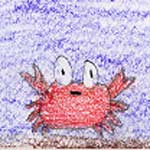Left Column Top
Left Column Bottom
Right Column
The Coastal Quiz
|
Are you a coastal expert? ... A lover of the ocean? Check
out how well YOU know the coast, how HUMAN action impacts its resources,
|
||
|
Questions |
||
| 1. Name three things discarded by humans in which marine animals can become entangled | 2. Name three things that we use in our homes or gardens that are potential hazards to our waterways and/or ocean? | 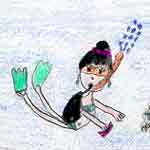 |
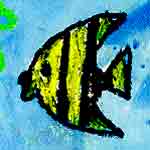 |
3. What are three ways that trash ends up on the beach? | 4. How
many gallons of water can one gallon of oil pollute?
-1,000, -10,000, -100,000 |
| 5. What percentage of the trash on our beaches comes from inland sources? | 6. Name three of the most commonly found items on Coastal Cleanup Day? | 7. What is marine debris and how is it harmful? |
| 8. What percentage of the earth is water? -78%, -41%, -54% |  |
9. Name two ways that plastics in the ocean can harm marine life. (60 percent of the trash picked up on Coastal Cleanup Day is made of plastic.) |
| 10. What are two ways that marine pollution affects you? | 11. What is a watershed? | 12. What is the difference between point source and non-point source pollution? |
| 13.
How long does a cigarette butt take to degrade? -2 weeks, -200 years, -4 years |
14. How many cigarette butts did volunteers pick up during the 1999 Coastal Cleanup Day in the United States? -812,153, -543,822, -284,632 | 15. What are three things that you can do to help conserve our waterways and ocean? |
| 16.
Approximately how many pounds of trash are discarded every day by each
person in California? -3.8, -9.3, -6.1
|
17. What are three ways you could reduce the amount of trash you discard each day? | 18. What are five items that we may discard as trash that can be recycled? |
|
Answers |
||
1.
Fishing line, fishing nets, plastic bags, plastic six-pack rings, other
plastic items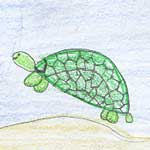 |
2. Any household hazardous waste could qualify as a good answer here. These would include pesticides (both herbicides and insecticides), paints, solvents, toxic cleaners, batteries, and oil from our cars | 3. Trash can be washed down from our storm drains and creeks and out to the shore, trash can be left by beach-goers, trash can be washed up from the ocean, or trash can be blown onto the beach by the wind |
| 4. 100,000 gallons of water. 5. 60 - 80 percent. | ||
| 6. The “Dirty Dozen” (the most commonly found items) from Coastal Cleanup Day 1999 were: Cigarette butts; Foamed plastic pieces; Paper Pieces; Plastic Pieces; Food bags/wrappers; Caps/lids; Glass pieces; Straws; Beverage bottles (glass); Other plastic items; Bottle caps (metal); and Packaging material. | 7. Marine debris is any substance that enters unnaturally in to the marine environment. It is harmful for many reasons. It can be mistaken for food by many marine mammals and birds, and ingestion of marine debris is potentially fatal for many of these animals. Entanglement is also a danger, as nets or plastic can choke, drown, or cause other harm to marine mammals, fish, and many birds. Marine debris can also damage boats and shipping vessels by entangling propellers or through collision with larger debris. Marine debris also soils our coasts, rendering them less appealing for beach-goers and adversely affecting our economy. | |
8. 78
percent.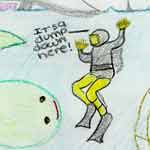 |
9. Plastics can entangle marine animals, potentially drowning or otherwise harming the animals. Marine mammals and birds can also mistake plastics for food. These plastics can then lodge in the animals’ stomachs, either blocking food from entering or giving them a false sense of satiation, damaging the animal’s health. Plastics can also entangle ship’s propellers, causing economic damage. | |
| 10. Toxic pollution can enter the food chain, traveling upward through bugs and fish, and ultimately ending up in humans, affecting human health. Marine pollution can also affect beach-goers - glass on the beach is a hazard, and toxic pollution can be a health hazard for anyone entering the water. | 11. A
watershed is the area of land that drains in a certain body of water.
|
|
| 13. 200
years.
14. 812,153 cigarette butts. |
15.
You can keep lids firmly on trashcans to keep trash from blowing out.
Ask your local bars, restaurants, and businesses to place ashtrays
outside where smokers congregate. Bring a canvass bag to the grocery
store instead of using paper bags. And support the California Coastal
Commission’s Public Education efforts by buying a Whale’s Tail
license plate! Call 1-800-COAST-4U to order.
|
|
| 16. 9.3 pounds per day. | 17. Reduce, Reuse, and Recycle. The less trash we create, the less trash will end up in our marine environment. | 18. Aluminum cans, glass bottles and jars, newspapers, magazines, junk mail, inserts, plastic bottles, and just about anything else made entirely from paper, metal, or certain types of plastic. |


